Here are the ten easiest vegetables to grow from seed and details on how to take care of these vegetables to provide an easy experience growing vegetables in your garden. Growing some of these plants will allow you to explore new recipes and improve your gardening skills. Below is everything you need to know about planting these as a beginner.
If you are interested in easily growing your own little fruit, a few vegetables, plants, & even fish farm (even if you live in an apartment) I would highly recommend you check out the Back Yard Farm Miracle program website which teaches you how to do this (with video instructions) and everything you should take into consideration. These tips and helpful information will help you learn more about how to plant some of these vegetables in your garden and give you advice on when the best time to plant them is. If you want extra gardening help, this is a great place to look for a long list of helpful tips.
1) Lettuce
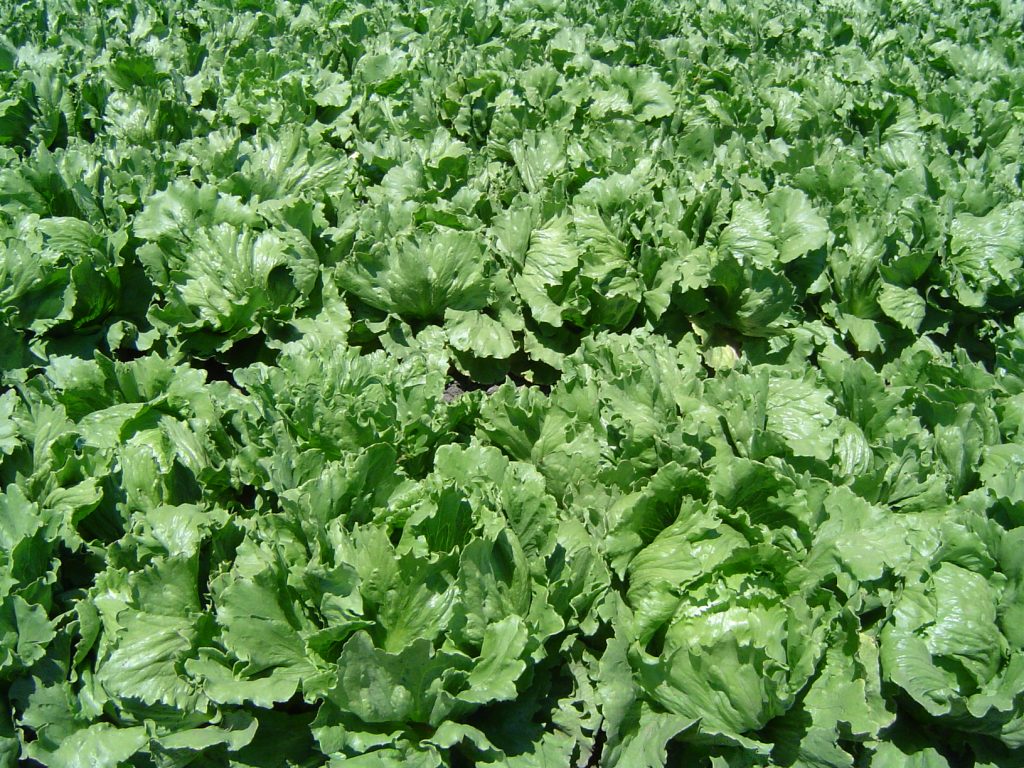
Lettuce is one of the easiest vegetables to grow and plant from seed for a garden because it grows quickly, can produce for a long time, and most lettuce does not demand much other than keeping it watered while in the dirt and having lots of room for the seeds. If you’re a beginner, it’s a great idea to start out by planting lettuce. There are also many different leaf shapes so that you can keep your food and some of your other plants interesting that can go with the lettuce.
For beginners, lettuce is a great option, and one of the easiest greens, for anyone wanting a cool-season crop. Using plastic containers or a garden bed is a good idea. The best time to plant all of your lettuce in your garden soil bed or compost, similar to a few other vegetables, for example, is either in the spring or the fall. In the spring, you should plant the lettuce starting two weeks before the frost. In the fall, you can plant the lettuce 8 weeks before the fall snow and no more than that. Lettuce is easy to grow from seed in a wide variety of settings so that you can be content with the final product. These are some easy vegetables to grow that require frequent watering but no trellis or other materials, with a gardening process similar to carrots and beans. There are many benefits to planting lettuce since they are great in salad and with other leaves that you can make at home.
Similar to other varieties of salad greens and flowers, lettuce does best in a place that has few weeds and should get at least 6 hours of light per day. Time to germinate lettuce takes around 7 to 10 days and is ready after 6 to 8 weeks. A great piece of advice and information to remember about lettuce: remove some of the outer leaves on the lettuce from the containers or garden only to let the center leaves keep growing into larger plants of leaf lettuce in your garden center. These are a few of the easiest vegetables if you are a beginner.
| Ideal Temperatures | 40°F to 70°F |
| Planting Time | Spring, Fall |
| Harvest Time | 6 to 8 weeks |
| Germination Time | 7 to 10 days |
| Spacing | 1/8 inch to ¼ inch deep, 4-16 apart |
| Light preferences | Full Sun, Part Sun |
2) Green Beans
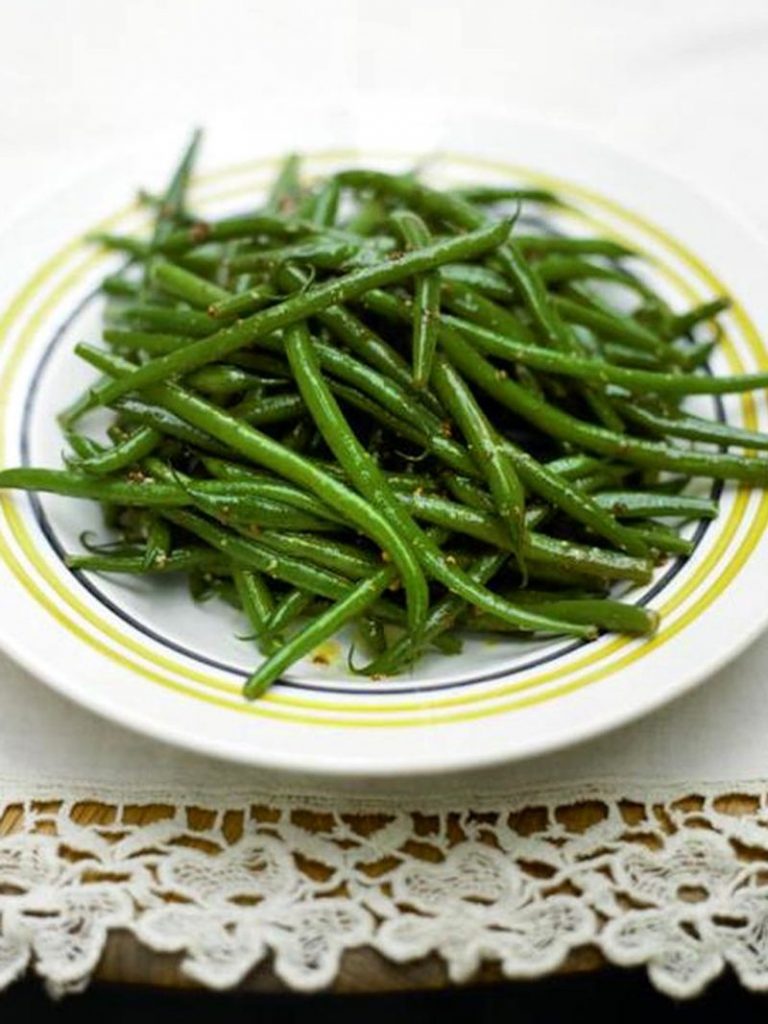
Green beans are also a few of the easiest vegetables to grow due to the seeds being able to grow in limited space. Green beans only need to be watered regularly like other plants and have incredible production in a long list of places once you plant them. These beans also easy to grow from seed in containers if that’s all you have.
The easiest time to plant a few of these beans in the soil is in late spring. Most green beans are generally easy to grow from seed in many climate varieties that are not too cold. When soils or the compost have warmed up to at least 48°F, germination for green beans will take 4 to 10 days. Green beans should be planted 1 inch deep into the ground and pretty close together. These beans can be planted in the shade.
These beans will be ready after 50 to 65 days in your vegetable garden, just like peas. Like other plants, green beans’ sugar levels are highest in the morning, so harvesting a few of the beans in the morning leads to better vegetables and is a great idea. You should pick many of the beans from the well-drained soil every day for more of the beans to grow from seed over time. These are a few of the easiest vegetables if you are a beginner. Green beans are great if you live in a warmer area and can plant veggies, like green bean plants, that require a longer gardening process.
| Ideal Temperatures | 55°F to 85°F |
| Planting Time | Late Spring |
| Harvest Time | 50 to 65 days |
| Germination Time | 4 to 10 days |
| Spacing | 1 inch deep, 2 inches apart |
| Light preferences | Full Sun |
3) Peas
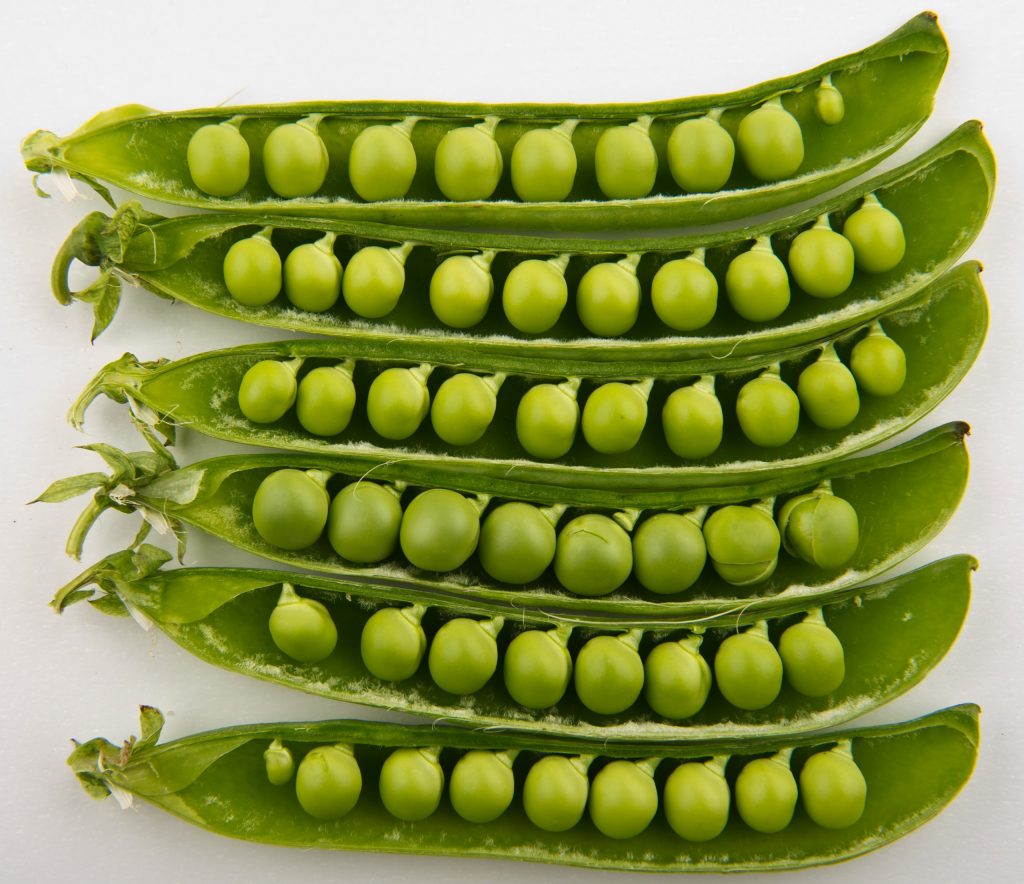
Peas are one of the easiest vegetables to grow from seed due to being able to plant these before the last snow session and you only have to water the dirt and plants periodically. Also, similar to other snap beans and plants, their many varieties of bush types require a minimal amount of space, so they’re easy to grow from seed in containers.
The easiest time to plant these popular green bean plants and their seeds in your gardening process is either in spring 4 to 6 weeks before your last spring frost or early autumn 6 to 8 weeks before your first frost. You will want to plant a few of the peas 1 inch deep and in a location that has light and few weeds. The heat will allow for the peas to produce more and be sweet in taste once you plant them.
After planting, germination for all of these vegetables takes 7 to 14 days in your vegetable garden. Most pea plants, similar to pole beans and string beans, are ready in 60 to 70 days. You will want to check daily to see if there are any pea pods ready. Pick these plants from the well-drained soil or compost in the morning after the dew has dried for the crispiest peas. They can be planted in the shade or sun. These are a few of the easiest vegetables if you are a beginner. Getting a pea trellis or hanging net is also a good choice to make if you want to grow plenty of these vegetables in a large window of time. Another key piece of advice: the more peas that are picked from the well-drained soil, more will develop, just like green beans and a long list of other foods.
| Ideal Temperatures | 45°F to 70°F |
| Planting Time | Spring, Fall |
| Harvest Time | 60 to 70 days |
| Germination Time | 7 to 14 days |
| Spacing | 1 inch deep, 2 inches apart |
| Light preferences | Full Sun, Part Sun |
4) Radishes
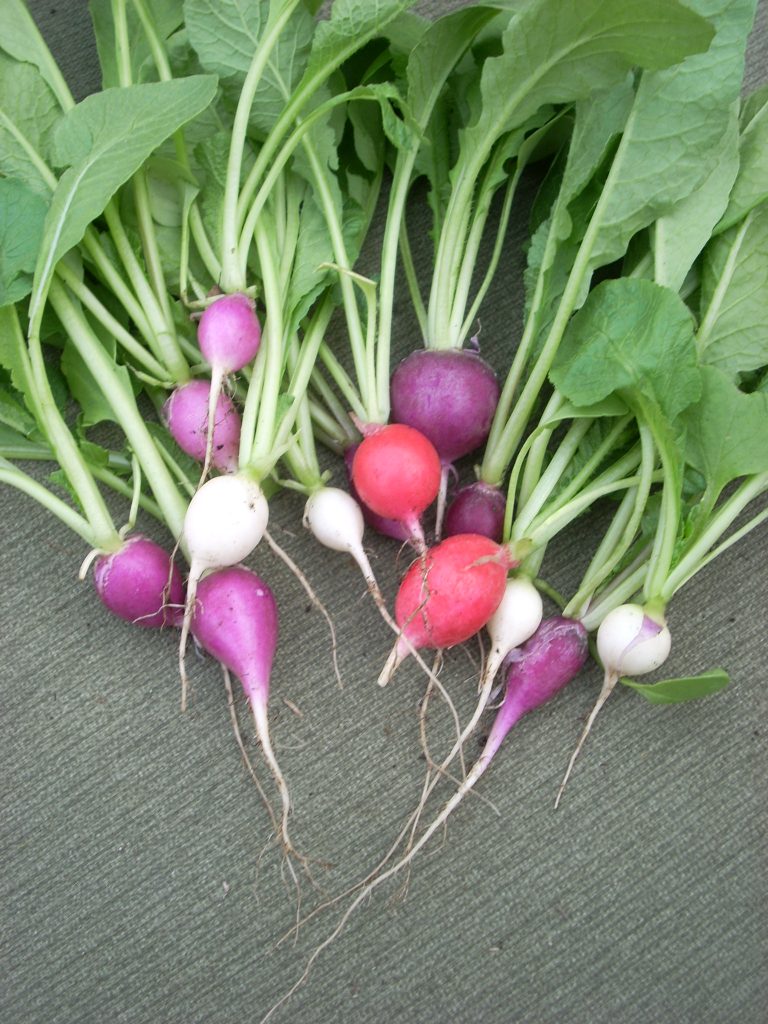
Radishes are yet another of the easiest vegetables to grow due to being able to plant them multiple times in a growing season. If you’re new to gardening, radishes are a great option to start out if you want to plant things from the ground at home, like squash or others that may not need a lot of frequent support.
Radishes are root vegetables that can be planted in either spring or the autumn but should all be avoided being planted in the heat of summer since they need support from the shade. Unlike most plants, these things are never grown in containers and are always grown in the ground instead of on a vine or a garden with vines. They should be planted in a warm spot, ½ to 1 inch deep, and 1 inch apart. They do not need tons of space. There are many benefits to planting them in the sun and not the shade, since they need heat and sunlight. The ideal climate for most radishes when you plant them are between 40°F and 70°F. The soil or compost should be kept evenly moist, which could be achieved through a drip irrigation system that you may also use for any breed of flowers.
Important information for everyone to note is that germination time for these takes 4 to 10 days. They have a fast harvest time! It’s a good idea to check the one that’s in the dirt before doing the others. If you leave the radishes in the ground of your garden too long, they could start to deteriorate in the soil and decrease in freshness, similar toother types of flowers. Radishes go great with squash, both types of peppers, kale, and in salads! They also have a higher water content like many others that grow on a vine. If you’re on the fence about doing the work in the garden, these are some of the easiest vegetables if you are a beginner and you will have lots of success if you take care of them frequently as an added bonus.
| Ideal Temperatures | 40°F to 70°F |
| Planting Time | Spring, Fall |
| Harvest Time | 20 to 30 days |
| Germination Time | 4 to 10 days |
| Spacing | ½ to 1 inch deep, 1 inch apart |
| Light preferences | Full Sun |
5) Carrots
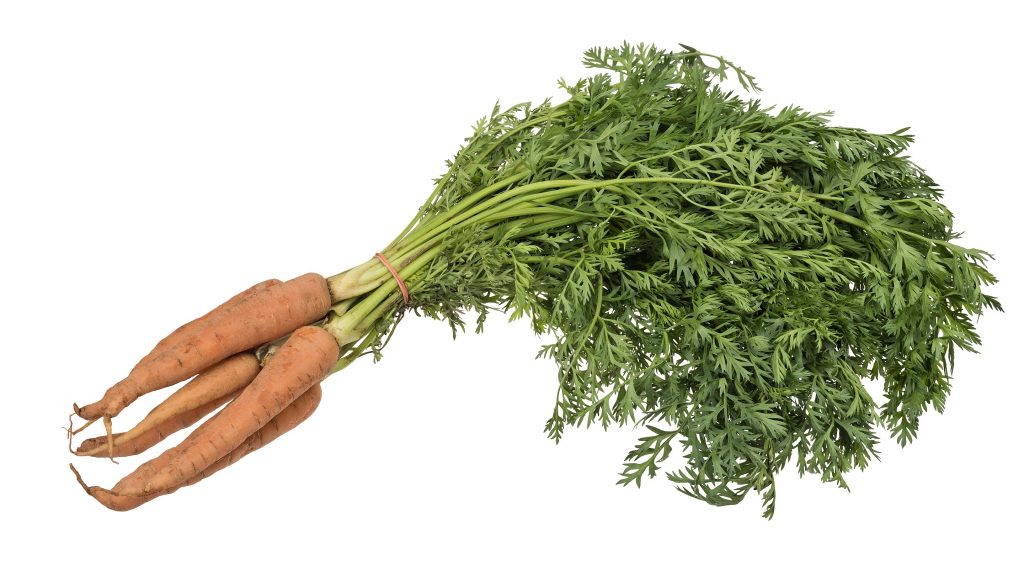
Carrots are some of the easiest vegetables to grow because they can handle cold weather and can be grown in many different garden soil types in the shade while gardening. If you’re a beginner gardener, carrots will be an easy thing to plant. Carrots also require no type of container gardening and are easy to plant even if you have no knowledge about growing vegetables or plants.
Carrots are root vegetables that, most of the time, should be planted in the spring and summer as they can continue growing. Making sure that the well-drained soil is good for your carrots is very important. There should be no rocks or stones in the containers or beds that could interrupt the growth of the carrots. It’s easiest to plant the sow seeds, transplants, or seedlings from a nursery during the last few weeks of spring for a summer deadline and plant the seeds of carrots 10 weeks before the first autumn frost for an autumn deadline. This is when their growing season is. They are almost never grown in containers and almost always grown in warm soil.
To support the carrots in the growing process, all carrots should be planted ¼ inches deep and pretty close together. Germination time for these crops takes 2 to 3 weeks. Keep the soil near the carrots moist, but not wet. The carrots are ready around 60 to 80 days. The smaller carrots taste better, so keep this in mind when harvesting carrots near your home or other areas or while planting the seeds. Carrots go great with swiss chard, peppers, kale, squash, and other root vegetables and edible plants! Kids also tend to care for these more when they’re cooked to taste sweet.
| Ideal Temperatures | 55°F to 75°F |
| Planting Time | Spring, Summer |
| Harvest Time | 60 to 80 days |
| Germination Time | 2 to 3 weeks |
| Spacing | ¼ inches deep, 2 to 3 inches from each other |
| Light preferences | Full Sun |
6) Cucumbers
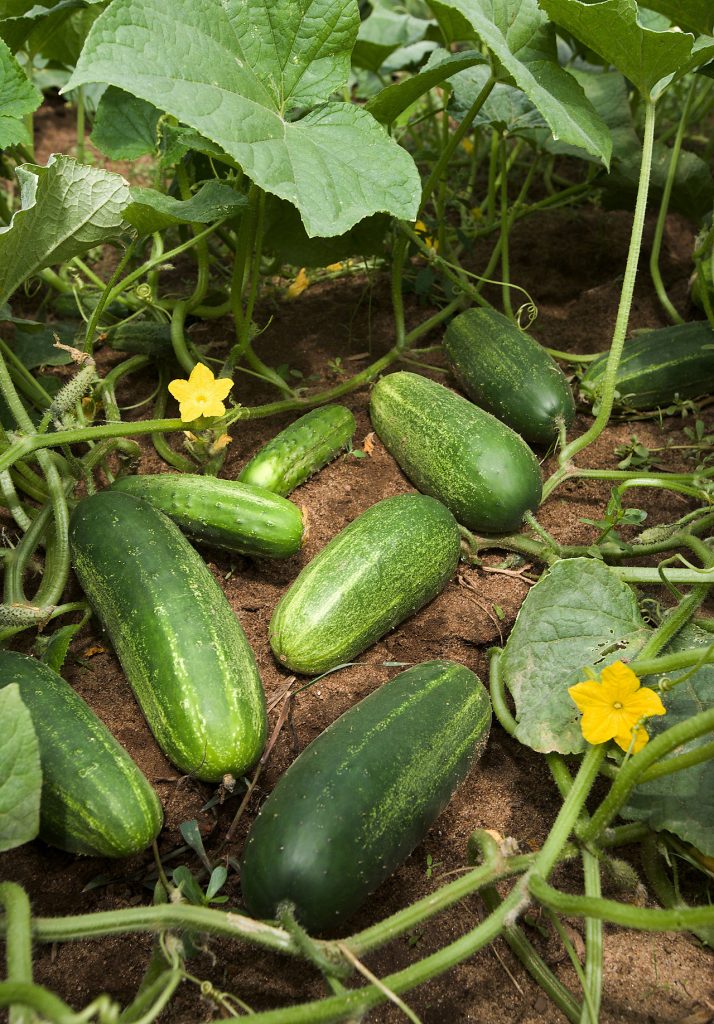
Another of the easiest vegetables to grow and plant for those new to gardening: cucumbers! In the same family as zucchinis, these plants thrive and grow quickly if the cucumbers have both sun and water while in the soil. These crops are almost never grown in containers, although it can be done.
Cucumbers are vegetables that need lots of sun, so making sure that cucumbers and their seeds are planted in a full sun spot is a must, and be sure to avoid areas with lots of shade for most of the time. The cucumbers should be placed 1 inch deep and 2 to 3 feet apart in the place that they are growing. Cucumbers do best in warm areas.
Germination time for cucumbers takes 3 to 10 days, and they are ready for people to pick them by 50 to 70 days and no more than 80. For maximum success, you don’t want cucumbers to get too large in your garden or their taste will turn bitter, like rotten ones. Regular slicing cucumbers should be harvested from containers or your garden when they get to be 6 to 8 inches long before eating. Similar to pole beans, cucumbers grow in soil with fertilizer and it’s typically best to use a fertilizer that is high in nitrogen to get the best colors and more taste out of the handful of cucumbers. A thing to note is that cucumbers have a great flavor and go very well in a variety of dishes with veggies that people love, like kale salads, greens, any flavor smoothies, squash, garlic recipes, and different types of drinks!
| Ideal Temperatures | 65°F to 85°F |
| Planting Time | Late Spring, Summer |
| Harvest Time | 50 to 70 days |
| Germination Time | 3 to 10 days |
| Spacing | 1 inch deep, 2 to 3 feet apart |
| Light preferences | Full Sun |
7) Tomatoes
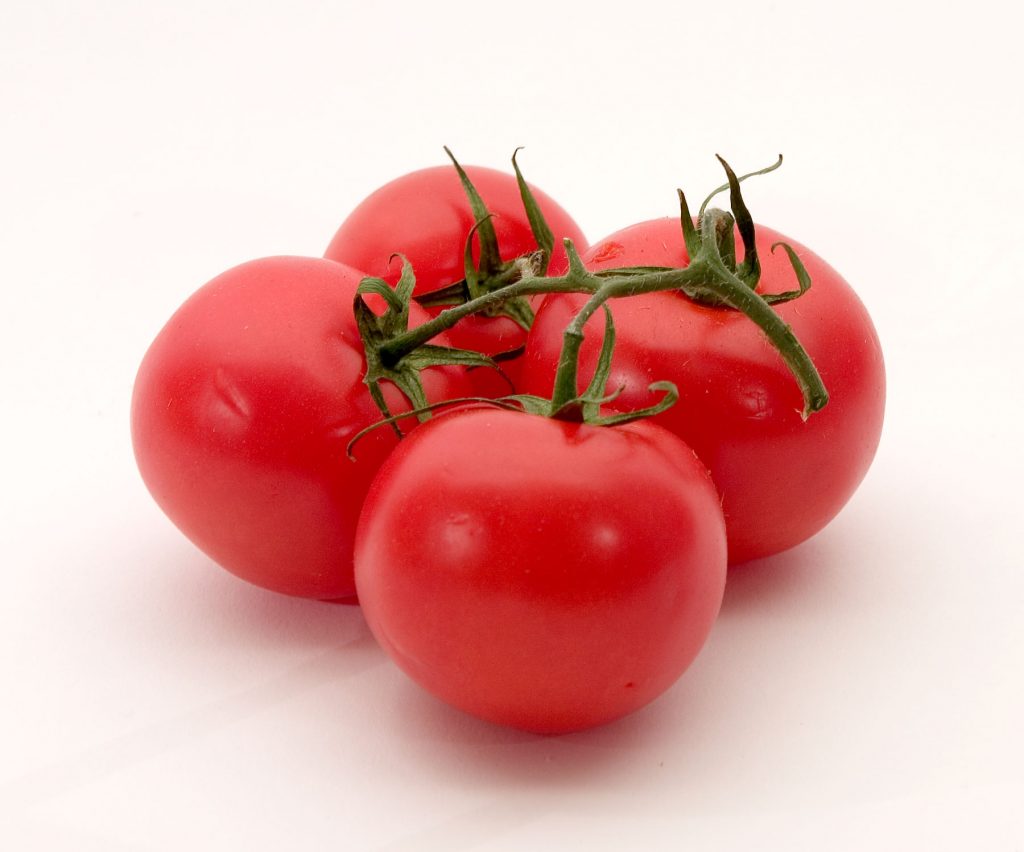
Tomatoes are another one of the easiest vegetables to grow that need much sunlight to survive. However, these vegetables require a minimal amount of effort in the garden and a low level of skill once you plant the seeds.
Tomatoes are a warm-season vegetable, like most herbs, so they are some of the easiest vegetables to grow in the summer. A thing to remember is that the tomato plants should be planted ½ inch deep and 2 to 3 feet apart in a neat order. They need to be planted in a location with direct sunlight to be able to thrive for most of the time while in the soil once you plant them.
All tomato plants should be watered in the early morning to keep them moist throughout a hot day in the garden or another place without sunlight. It may be best to place these under a tree or moist area. Germination time is about 5 to 10 days. The tomatoes can take anywhere from 60 to 100 days in the areas that you choose. It is better to keep the tomatoes on the vine as long as possible, unlike most crops. One rule of thumb: tomatoes should be taken out when they are firm and very red. Although they have vegetable seeds, transplants, or seedlings from a nursery, the entire tomato is safe to eat and easy to plant on your own in any garden bed. Keep in mind that like many hybrid vegetables, cherry tomatoes have a great disease resistance and frosts compared to larger tomatoes. All tomatoes go great with swiss chard, peppers, summer squash, kale, and various types of lettuce in a salad with veggies. There are many great recipes that you can put to use once a handful of tomatoes from your garden are ready to eat. These are some of the easiest vegetables to grow if you are a beginner and you can grow many different types.
| Ideal Temperatures | 55°F to 75°F |
| Planting Time | Summer |
| Harvest Time | 60 to 100 days |
| Germination Time | 5 to 10 days |
| Spacing | ½ inch deep, 2 to 3 feet apart |
| Light preferences | Full Sun |
8) Pumpkins
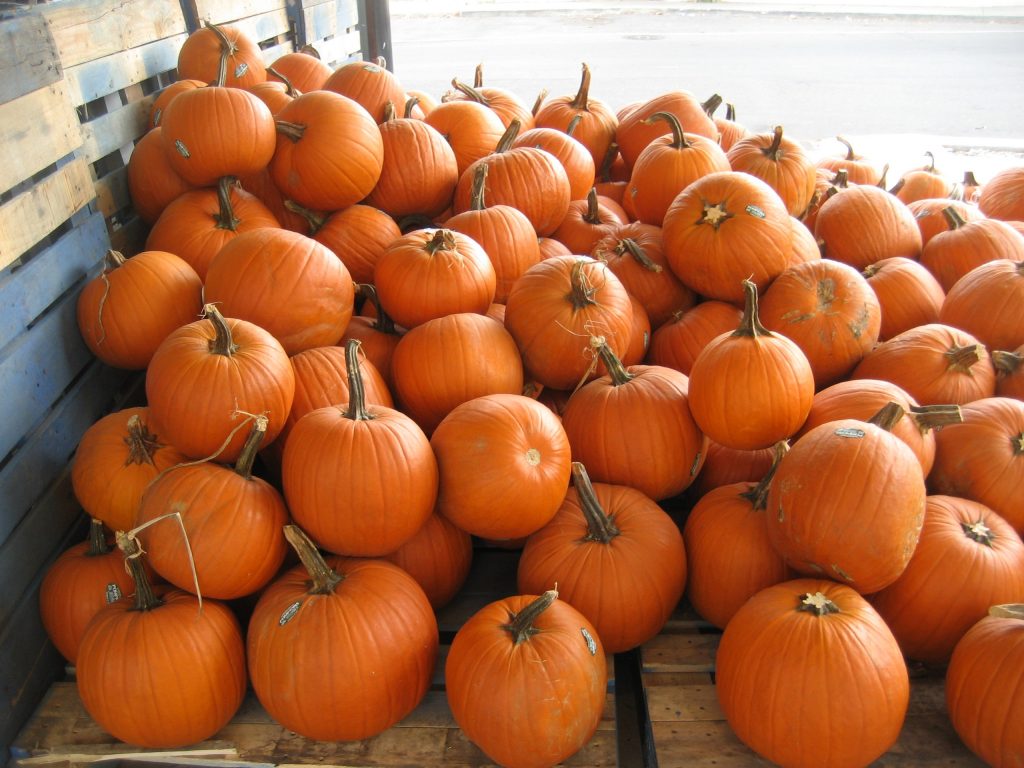
Pumpkins are one of the most fun and easiest vegetables to grow. In my experience, once you plant them just once, they come back each year. Pumpkins rarely have pests or diseases.
The thing to remember is that you will want to plant all pumpkins in the summer once there is no more cold weather and the well-drained soil is warm. Summer is known as the best growing season for pumpkin planting, unlike most crops, making these some of the easiest vegetables to grow during that time. The ideal temperature for pumpkins is between 70ºF and 95ºF in warm soil and warm weather once you plant them. These are some of the easiest vegetables to grow with sow seeds or seedlings from a nursery if you have sufficient space for these vegetables. The seeds for these vegetables need to be planted 1 inch deep, far from any bush, and with spaces 4 to 8 feet apart. Then, vines will have plenty of space to grow.
One fact to take note of about these plants is that the gestation time for these plants is 5 to 10 days, but they won’t be ready until 90 to 100 days. For ultimate success, make sure that you allow them to fully mature on the vine. It is ready when it has turned a deep, solid orange. These are some of the easiest vegetables if you are a beginner. These vegetables go great with summer squashes, herbs, a kale salad, snap beans, bell peppers, and any meal around the holidays. These are great vegetables to grow during the summer since they are in the same family as squash and grow similarly in the dirt. They also have similar harvests, meaning that you can take care of your harvests all at once.
| Ideal Temperatures | 70ºF to 95ºF |
| Planting Time | Summer |
| Harvest Time | 90 to 100 days |
| Germination Time | 5 to 10 days |
| Spacing | 1 inch deep, 4 to 8 feet apart |
| Light preferences | Full Sun |
9) Beets
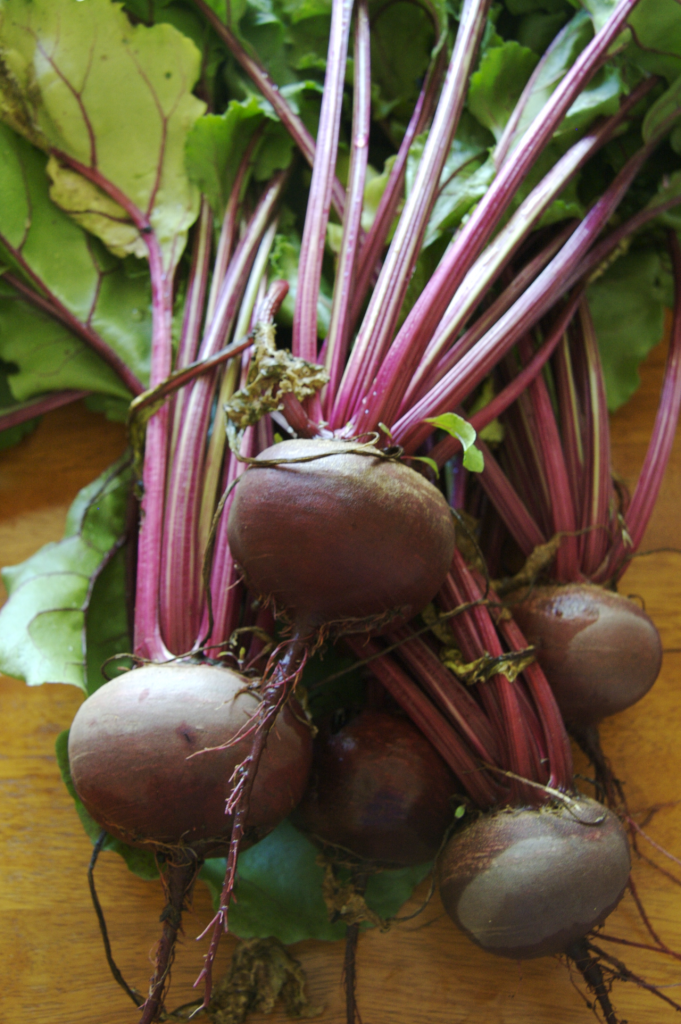
Beets are also one of the easiest vegetables to grow in your garden, especially if you’re on the fence about growing vegetables. One thing to note if you are a beginner: when looking for seeds, transplants, seedlings, or leaves in a nursery, look for some of the bolt-resistant varieties to avoid them from maturing too quickly in the soil from warmer weather. Beets are similar to radishes and the way that you grow them is also similar to how you grow radishes in compost.
These are a cool-season crop and farmer favorite that everyone loves, and for the easiest growth process, it is best to plant all of the seeds or seedlings in the soil in early spring until around mid-summer which is when their growing season is. These vegetables’ seeds or seedlings should be planted ½ deep in the ground since nothing deeper will allow them to grow correctly or support them. Be sure to water them regularly. The process is similar to the way that you would plant radishes and a wide variety of more similar veggies.
Beets have a germination time of 5 to 21 days and no more than that. These plants need water regularly to maintain a bonus of moisture to grow well. They should be ready around 55 to 70 days, so they are the easiest vegetables to grow if you are able to water them frequently. They are easy to grow and you will be able to tell when they are ready by the roots. If the round roots in the rows are golf-ball size or larger, they are ready. Be careful when pulling a bit of the beet out. You will want to soften the soil and start watering once they are ready and gently pull from the garden. They go great with a summer squash, radishes, onions, salads, and many more dishes. These will also last a long time and are super easy to keep if you purchase a plastic container or anything similar for the fridge or freezer to keep them in. One fact to note that may help you is that while growing, they do not typically need lots of space until the harvest, unlike other ones that grow from a bush.
| Ideal Climates | 50°F to 75°F |
| Planting Time | Early Spring to Mid-Summer |
| Harvest Time | 55 to 70 days |
| Germination Time | 5 to 21 days |
| Spacing | ½ inch deep, 1 to 2 inches apart |
| Light preferences | Full Sun, Part Sun |
10) Zucchini
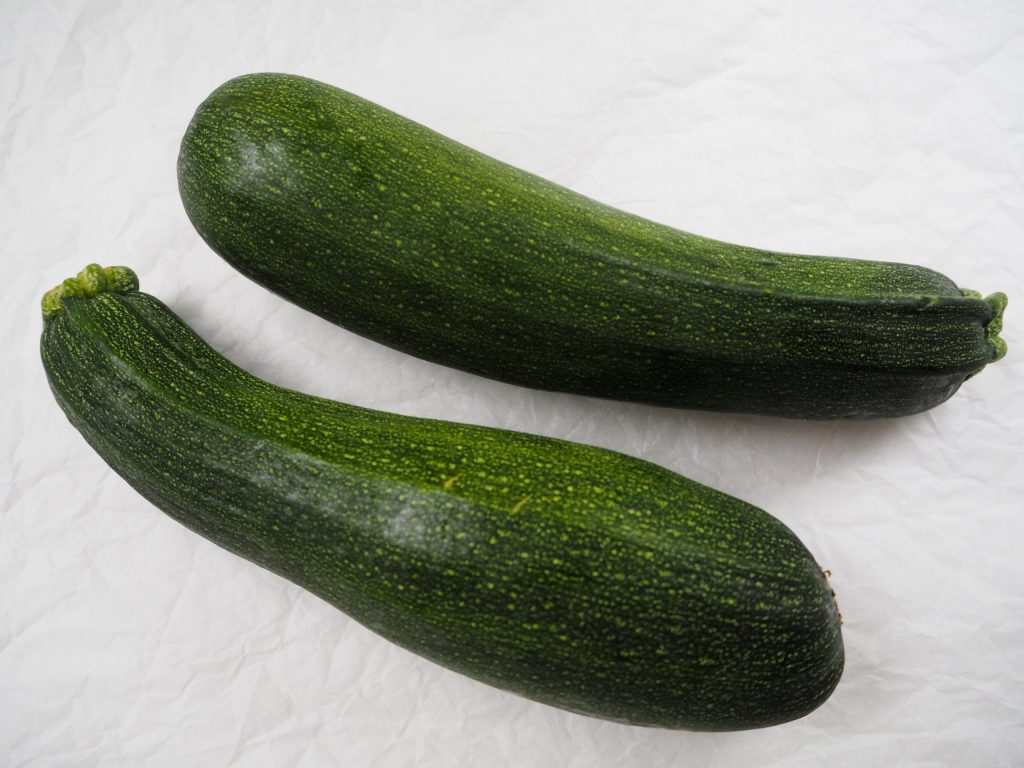
The last easiest vegetable to grow is zucchini because the seeds and seedlings will grow quickly in the soil or compost and produce a lot. They are also rarely plagued with diseases. Usually, you are safe having only one of two zucchini plants in your garden, and even then you can get more than you need.
Both bell peppers and zucchini in a location with warm weather, 1 inch deep and 2 feet apart, nothing closer together will give them sufficient room. It is best to wait on planting too early due to avoiding pests in the earlier seasons with zucchini. The ideal temperature for zucchini is between 70°F and 85°F, making them great for warmer home gardens. While growing zucchini, in order for it to work, it’s best to use bush types similar to Patio Green Bush and to water them when needed.
The germination time for zucchini can take anywhere from 7 to 14 days, and the average time until the deadline is 60 days. You will want to prepare all of the zucchini at about 6 to 8 inches in length. This will have better taste and more support than letting them grow too large like the bigger ones. The more you pick the zucchini, the more items you will get in the season. Many people like to put zucchini in a summer squash, kale salad, and a long list of other recipes since they’re super easy to make.
| Ideal Temperatures | 70°F to 85°F |
| Planting Time | Spring, Summer |
| Harvest Time | Average is 60 days |
| Germination Time | 7 to 14 days |
| Spacing | 1 inch deep, 2 feet apart |
| Light preferences | Full Sun |
I hope these facts and tips about how to grow vegetables helped you learn the different varieties of easy vegetables to grow in your backyard. Have fun growing your vegetables!
